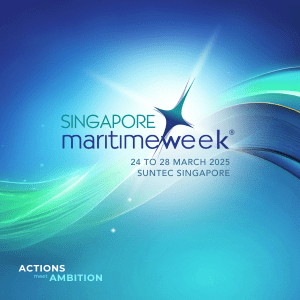The government’s focus is to improve transshipment scenario at Indian ports to save on logistics cost for EXIM trade. And foreign carriers are also keen to put Indian ports on the world map of transshipment hub ports. However, due to the ambiguity and lack of clarity in the cabotage policy, container handling ports and terminals are shying away from transshipment, and EXIM trade being dynamic in nature, no port and terminal operator is sure of achieving 50 percent transshipment target Y-o-Y.
With reports of Indian cabotage policy under review, the debate has once again resurfaced whether India should or shouldn’t allow foreign flagged vessels to ply on Indian coast. The most recent general order from the Indian government was announced in March 2016 which states that in case of container transhipment ports with compliance of certain conditions could be allowed to handle foreign flagged vessels, and the foreign flagged vessels can transport EXIM and empty containers from the transhipment port to any port in India and vice versa. But even after 2 years since the ruling came into force, there are hardly any takers from the port and terminal segment. With the government’s focus on lower cost of logistics for manufacturers which can drastically improve Indian exporters’ competitiveness in the global trade arena.
India due to lack of transhipment ports, to a large extent is dependent on hub ports in neighbouring countries for the movement of its EXIM cargo where containers are moved to Indian shores on smaller (feeder) vessels, and vice versa. Though many Indian ports have registered significant growth in containerised cargo volume and have infrastructure at par with their global peers, the question arises what keeps them away from taking a plunge into the lucrative transhipment segment. The reason is there is a trick off the sleeve, and here there are more than one, which ports are finding hard to deal with.
Unlike the ruling of 2015 which had very clearly mentioned that foreign flagged Ro-Ro, car carriers, LNG vessels, project cargo carriers etc. after obtaining statutory clearance can ply on Indian coast for a period of 5 years commencing from the date of issue of the order, on the contrary the 2016 ruling lacks similar clarity.
Why the change in law?
In 2016, when the change in cabotage policy came into effect, the policy makers argued that the cabotage relaxation will enable shipping lines to consolidate Indian EXIM and empty containers at transhipment ports in India for onward transportation to destination ports by main line vessel.
At a time when the government is confident that the new changes will enable the spare capacity of the foreign flag ships, which could not be utilized due to cabotage restrictions, could be gainfully utilized allowing them to offer competitive container slot rates to exporters and importers leading to competition led efficiency in container transportation and lower logistic costs for shippers. However, Indian ports and terminals are not keen to take the benefit of transhipment and the reason for the jaded response is the ceiling imposed by the law which depicts that the container handling ports need to individually apply for cabotage relaxation and the applicant port should be able to trans-ship 50 per cent or more of the cargo handled in a year else the benefits will be revoked, moreover, the port will not be able to gain the benefit of cabotage relaxation for 3 years. The said ruling has been a major deterrent for container ports even in case of large ports which are clocking transhipment cargo beyond 50 per cent. EXIM trade is volatile in nature, and no port and terminal operator are sure of achieving 50 per cent transhipment target year-on-year. Meanwhile, with the transhipment policy failing to gain momentum, the government has hinted at going back to the drawing board and reframe the policy to pave a middle path for all stakeholders, especially to generate interest among container ports and terminals.
Speaking about the prevailing policy regime for cabotage, sources at Adani Port said that the law doesn’t have much to do with the ports, and ports handle cargo of Indian origin as well as EXIM. Because of the cap of 50 pe rcent transhipment, ports refrain to apply for cabotage relaxation. The 50 percent transhipment rider is not a practical approach for any port, and rarely any Indian port could meet the target on a regular basis. Adani Port wouldn’t like to restrict itself by opting for the prevailing cabotage relaxation which has a rider of 50 per cent transhipment target. The EXIM business is very dynamic, and ports would like to keep options open and depending on market conditions they might be doing transhipment or might not. Also a port doesn’t take a call on whether to offer transhipment and it largely depends on the network planning of shipping lines. Hence, ports have limited control over transhipment cargo.
 Capt. Deepak Tewari
Capt. Deepak Tewari
CEO, MSC Agency (India)
Cabotage should be relaxed completely. Because it will facilitate clearing and shipment of EXIM cargo at Indian ports, and it will also ease the movement of empty containers. As a result it will translate to savings for the shipping lines and Indian trade as well. If we make a peer-to-peer comparison, there will be an average savings of 28-30 per cent in operating cost.
How the market reacts?
The Indian fleet operators have pronounced to dump Indian registration if the change in cabotage law and revocation of right of first refusal (RoFR) benefit exclusively available to Indian flagged vessels, comes into effect. Speaking on the matter, Anil Devli, CEO of Indian vessel operators’ industry body Indian National Ship-owners Association (INSA), told Maritime Gateway, “There is no cabotage law in India for shipping sector and if we take the example of domestic airline sector passengers don’t have the privilege to go for a foreign airline flying between two Indian cities as a result domestic airline operators in many instances charge exorbitantly. Even in case of railways, a foreign rail operator has to have an Indian registered company to move cargo in India. But Indian flagged vessels couldn’t have monopoly because for an exporters or importer if there is no availability of Indian flagged vessel, then the exporter has the option to charter a foreign flagged ship on the Indian coast.”
There are enough Indian ships to take care of cargo and transhipment because Indian container vessels have grown by 100 per cent in past 2 years, and Shreyas, Sima Marine India, and TCI are the three coastal container vessel operators that connect to 18 Indian ports, including all major ports. But despite that Indian vessels are not getting enough cargo and on many instances vessel slots are not getting utilised and have to run empty, explained Devli.
In a bid to curtail a domestic airline like monopoly, the Indian government had come up with the RoFR procedure to keep a check on freight rate, and create a competitive market. As per the RoFR procedure, the cargo owner can get a quotation for freight rate from a foreign shipping line, and ask an Indian vessel operator to match the lowest price offered by foreign vessel, also called as L1 rate. And if the Indian vessel operator denies to offer a corresponding tariff, then the cargo owner is free to hire a foreign operator, and the practise in there for decades. Devli said that the Indian vessels have to match the rate quoted by a foreign vessel, whereas domestic operators didn’t stand on a comparative ground due to higher expense on each sailing owing to taxes and other statutory requirements, such as IGST and expensive bunker fuel. Devli reiterated that Indian vessel operators have been demanding before the government to provide a level playing ground so that domestic ships could compete or the foreign vessels shouldn’t be allowed to operate on Indian coast at all.
 Anil Devli
Anil Devli
CEO, Indian National Ship-owners Association (INSA)
There is no cabotage law in India for shipping sector and if we take the example of domestic airline sector passengers don’t have the privilege to go for a foreign airline flying between two Indian cities as a result domestic airline operators in many instances charge exorbitantly. Even in case of railways, a foreign rail operator has to have an Indian registered company to move cargo in India. But Indian flagged vessels couldn’t have monopoly like airline or rail.
Meanwhile, Capt. Deepak Tewari, CEO, MSC Agency (India) explaining the stand of foreign shipping lines, said, “Cabotage should be relaxed completely along the Indian coast. Because it will facilitate clearing and shipment of EXIM cargo at Indian ports, and it will also ease the movement of empty containers. As a result it will translate to savings for the shipping lines and Indian trade as well. If we make a peer-to-peer comparison, there will an average savings of 28-30 percent in operating cost.”
Speaking on less favorable market condition for Indian flagged vessels, Deepak Tewari said, “Since independence there is cabotage law in place but there isn’t much benefit to the trade due to it and domestic operators didn’t do enough in the past years. The larger interest of the trade shouldn’t be kept on stake to benefit one or two domestic container vessel operators. If the Indian operators feel at a disadvantage they have the option to register as a foreign flagged operator. Protectionism is leading to inefficiency and higher cost for the trade. If the cabotage law is changed India will be able to retain transshipment cargo outflow to overseas ports.”
Transshipment: Can India pull it off ?
A study by Shipping Ministry reveals that around a quarter of India’s total container volume is transshipped through Singapore, Port Klang but the major outflow is through Colombo. Notably, India’s container traffic is expected to touch 25MTEUs by 2025. In such a scenario, country’s foreign currency outflow will be significant. Also transshipment through a foreign port incurs additional cost in terms of feeder service from Indian port to transshipment port and it also adds to the burden of multiple handling costs. All these factors put together, Indian port sector is losing roughly `1,500 crore per annum on transshipment charges. It further translates to an estimated loss of `3,000-4,500 crore to the economy based on the economic multiplier effect of 2-3 times for ports on country’s economy. If we take an example of an Indian trader exporting a container to Europe, transshipment at foreign ports like Colombo increases the logistics cost by about `5,000-6,000 (roughly US$ 80-100) per TEU making the Indian export less competitive in the global market.
In such a scenario having a transshipment hub port would very much be in favor of Indian trade, and India offering cost-efficient feeder network could attract mainline vessel operators. Currently, the capacity of Indian feeder network for a weekly service is about 5,100 TEUs, which is expected to grow to about 8,300 TEUs by 2025 which may not be sufficient to fulfill the demand. Hence, India needs to open up its shores to attract international feeder network. Furthermore, Indian coastal shipping costs are relatively higher compared to international standards, and it needs to be addressed to make Indian transshipment port competitive. An Indian transshipment port could also improve cargo movement to Africa, Europe and Easter America, and act as a more economical alternative for the Indian subcontinent, especially by providing better feeder linkages to Bangladesh and Myanmar which are transshipping their EXIM cargo at Singapore.
While the domestic and foreign vessel operators are looking to protect their turfs, but there is no denying the fact that Indian ports offering transshipment service have added to the ease freight movement for domestic trade. It could lead to a competitive market environment and multiple cargo handling could also come down significantly as a result shippers can better plan the cost and most importantly the time needed to ship cargo.
Another major factor is availability of empty containers to exporters, which plays a major role for shippers to make time commitments to overseas clients. Let’s take a prospect for shippers related to the importance of time; apart from detention to move cargo to mainline vessels, the unpredictability in freight movement time leads to increased inventory cost for the consignees. Consignees who on an average maintain 15-20 days of inventory stock round the year because of various logistics uncertainties they face during peak season would increase their inventory to a 1 month to avoid any shortage of cargo.
From transhipment point of view during peak demand days such as Q1 and Q4 of the year, containers had to wait at transhipment ports like Singapore and Colombo longer than usual. But after the introduction of transhipment at ports like Krishnapatnam, the delays could be reduced, subsequently the waiting time. Moreover, exporters and importers can also save on freight cost as instead of moving cargo on feeder vessels to overseas transshipment ports, they can avail mainline vessels at Indian ports. Even if the domestic vessel operators have competitively lived upto the expectation and demand of growing EXIM trade but in the long run India requires its very own transshipment hub ports to compete globally and it is also important from strategic point of view. It is also a fact that India doesn’t have a global shipping line backed by which the country could float a transshipment hub. Whether any Indian port could be a transshipment hub or not largely depends on putting it on the map of port of call for major foreign lines and it couldn’t be possible with a restrictive environment and clarity on policies.








